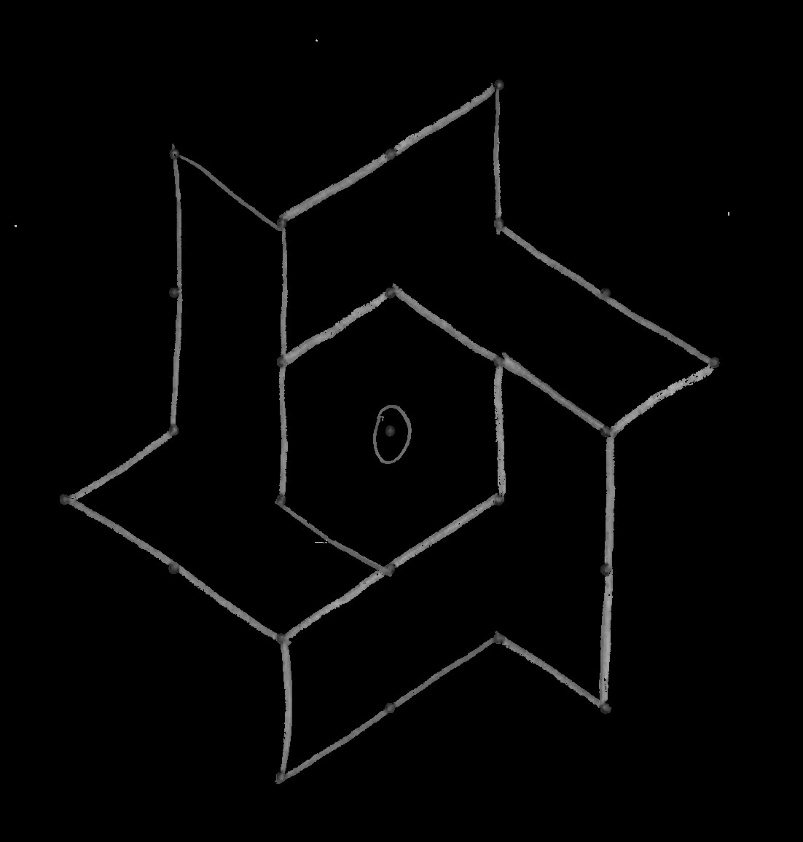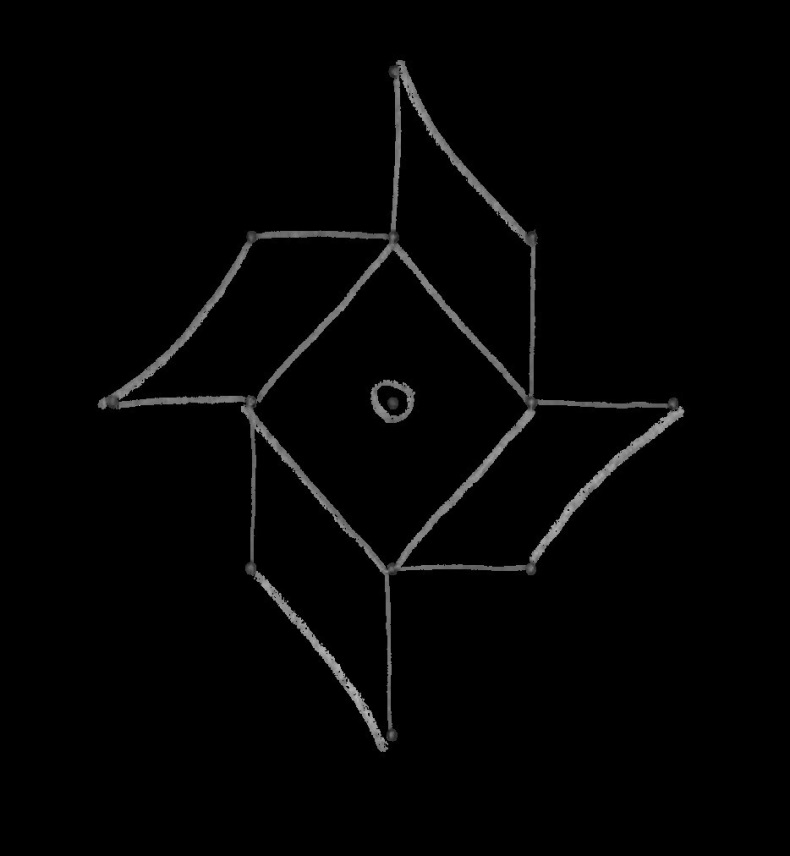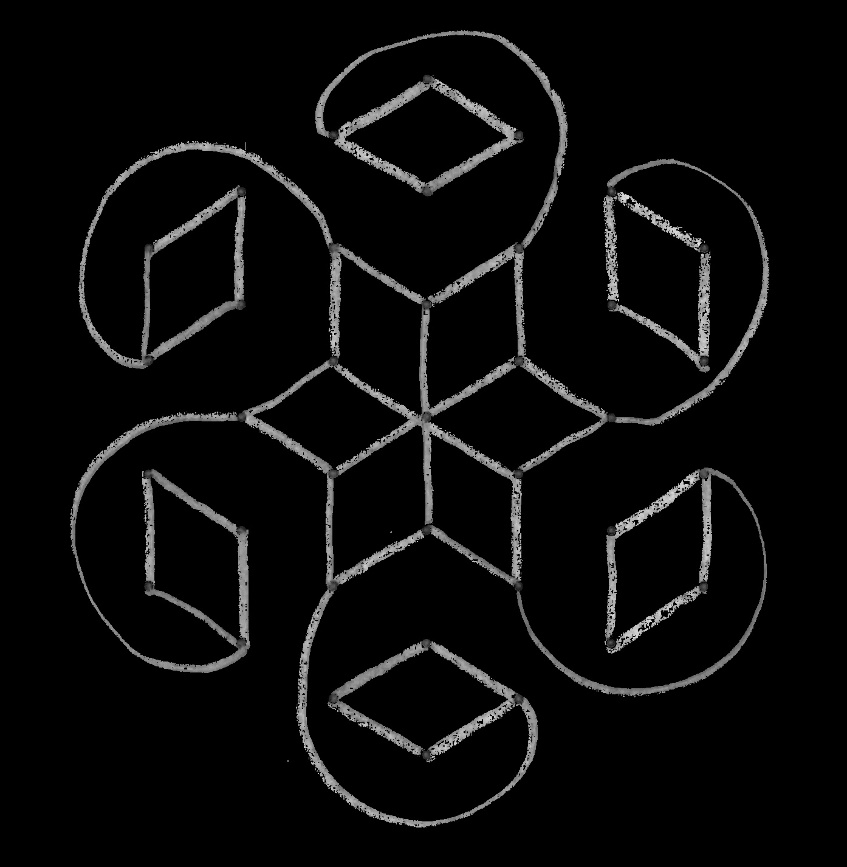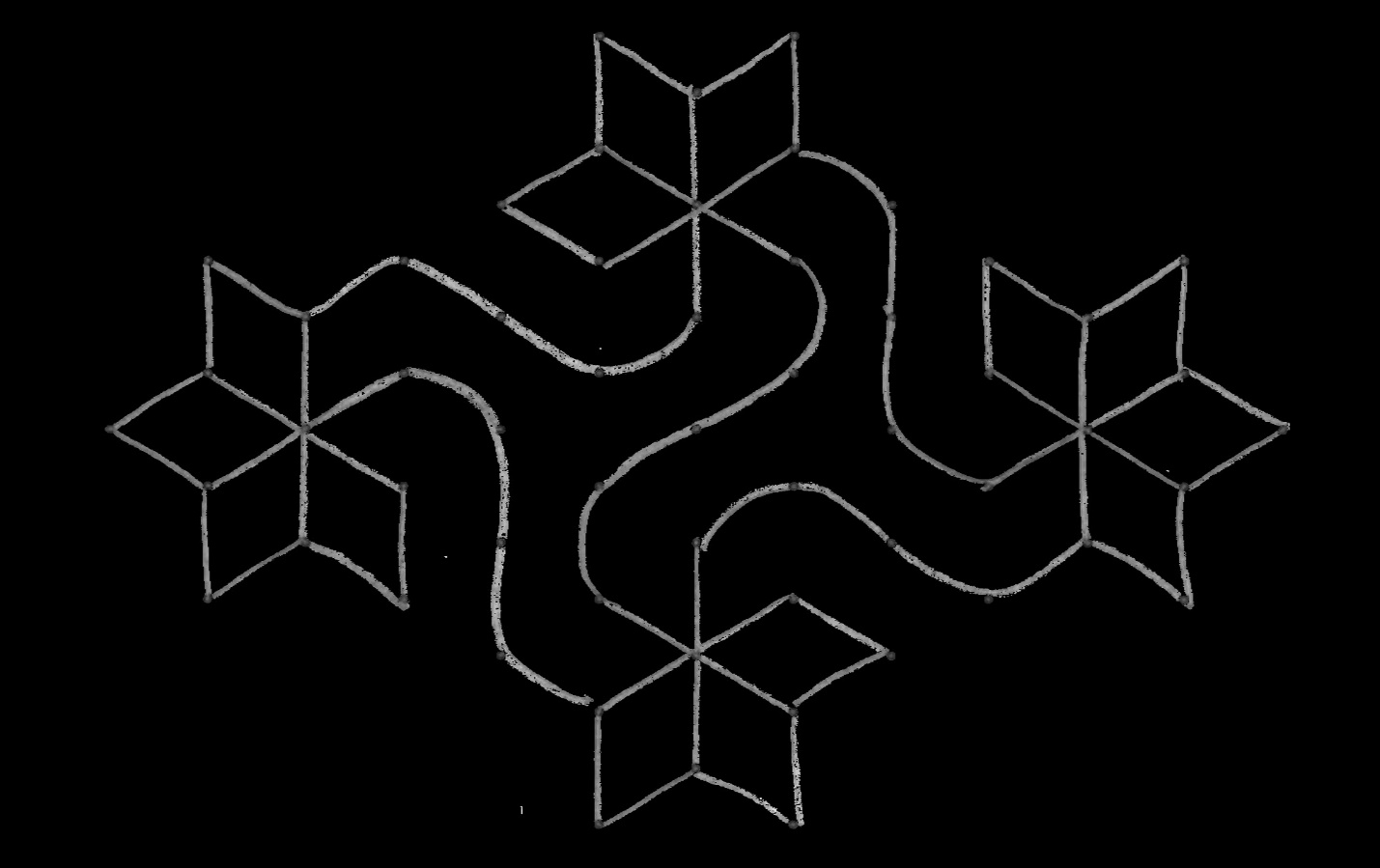This module is designed to help you explore how symmetry affects your life each day. Symmetry is something for which most people have an intuitive feel, but many have never thought about in enough detail to give names to all that they see. Symmetry is a way that a figure is like itself. Perhaps one side is a mirror image of the other (reflectional symmetry). Perhaps if you turned the image a little, you would get the same pattern (rotational symmetry). Perhaps there is a repeated pattern along a line, so that if you moved one "space" down, the pattern would repeat (translational symmetry).
Perhaps there is some combination of these. A common pattern is that the pattern repeats if you move down the line and reflect across the line, as happens with alternating leaf arrangement on a plant (glide reflection symmetry). There are far more patterns than names.
Symmetry is everywhere. Minerals organize themselves in crystals, which are repeating patterns. Plants and animals have many interesting symmetries in their shapes. Most artistic traditions in the world, and many activities where people design a shape for its function, depend on some form of symmetry. In this award, Scouts get to explore many aspects of this topic.
Fearful Symmetry
Requirements last updated January 2022. There are broken links and outdated information in places and formatting may not match between two Nova awards because the requirements are preserved to match the original state from Scouting America. Where available, the related counselor notes have been included along with the requirements.
- Wolf Cub Scouts: Air of the Wolf, Code of the Wolf
- Air of the Wolf: The symmetry of flying objects has a big impact on how they fly: Does the paper airplane veer to the left? Does it go up instead of down? These concerns also apply to kites, sleds, and boats.
- Code of the Wolf: Many of the shapes we see in nature exhibit symmetry of some kind (leaves, flowers, animals); indeed, they often have more interesting symmetry than the "pure" squares and circles we draw! Predictions always depend on symmetry. We assume the future will look something like the past.
- Bear Cub Scouts: Forensics, Marble Madness
- Forensics: The crystal structure of various substances (salt, sugar, etc.) is an important way of distinguishing them. Lack of symmetry between two shoe imprints from the same pair is an important way of distinguishing an individual pair worn by a particular person.
- Marble Madness: Notice the most important fact about marbles: They roll because they have spherical symmetry, an infinite number of symmetrical sides. You also likely created some symmetries in your marble courses. What makes a marble game "fair"?
- Webelos Scouts: Art Explosion, Build It
- Art Explosion: Notice all the symmetry you can - and also where a symmetry you expect is lacking - in the art that you see and make. Symmetry tells the viewer what to expect. Lack of symmetry can be surprising.
- Build It: Look at the symmetry of what you made. Did you plan for this?





